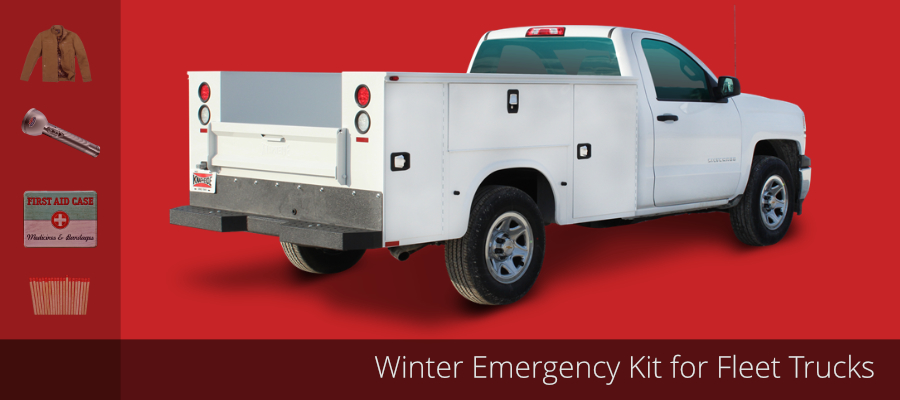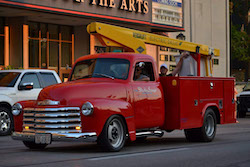 You might think about keeping an emergency kit in your personal vehicle during the winter, but this is also important for your fleet trucks. Your fleet is more likely to be out in inclement weather fixing power lines, plowing or even rescuing people who slid off the road. Your fleet always has a chance to get stuck or break down in below-freezing temperatures. Keeping an emergency kit in all of your trucks could save an employee’s life.
You might think about keeping an emergency kit in your personal vehicle during the winter, but this is also important for your fleet trucks. Your fleet is more likely to be out in inclement weather fixing power lines, plowing or even rescuing people who slid off the road. Your fleet always has a chance to get stuck or break down in below-freezing temperatures. Keeping an emergency kit in all of your trucks could save an employee’s life.
Safety
While most fleets that do utility work, towing or plowing already have safety items such as flares, cones and other items to make the work area more visible to other drivers, you should add extra to the winter emergency kit, especially for those working off the beaten path or those working during a whiteout.
Additional items that should be added to the winter emergency kit include:
- Heavy-duty tow straps. Each driver should have at least two, in the event that one breaks or he or she needs two for a longer distance.
- Tire chains. These will help a heavier truck with traction on icy roads or could get a truck out of a ditch without having to wait for a tow.
- Toolkit and extra parts. Some breakdowns are easy enough to repair in the field, even with little automotive knowledge. Each truck should have the basic tools to change hoses and belts, plus extra hoses and belts on hand.
Emergency Kit
Every work truck should be equipped with at least a basic emergency kit. However, you will need more than the basics if you stuck or break down during the winter. Some of these extras could save your life – or at the least, make you more comfortable while you are waiting for help.
• Extensive first aid kit with needles and thread for emergency stitches, gauze, different sizes of bandages, alcohol, witch hazel for cleaning deeper cuts, super glue for gluing deeper cuts together when stitches are overkill, tweezers, extra water for cleaning cuts and inradjuries.
• 2 liters of water for each crew member.
• High-energy foods such as granola and chocolate for each crew member.
• A blanket for each crew member.
• Extra batteries.
• Flashlights.
• Matches in a waterproof container. Don’t rely on a lighter that could get wet or run out of fluid. Matches could be used to start a fire for warmth or to sterilize needles in the event someone needs stitches, so be sure you have plenty.
• Cell phone charger.
• Emergency radio – never count on a cell phone working. You should be able to get weather reports and call out on the radio.
• If space permits, each crew member should also keep an extra jacket, clean thick socks and an extra pair of shoes in the truck in the event that these items get wet while working outside.
• Tarp for protection or to keep dry if crew members need to get under the truck.
The best way to survive for hours or even overnight is to keep warm and make sure you have plenty of energy from high-energy food, in addition to enough water. While you could melt snow in a pinch, it’s better if you have fresh, sterilized water.
Contact Drake-Scruggs
Before you send your fleets out in winter weather, make sure you have an extensive emergency kit and that all of your trucks have been checked and have had recent maintenance done on them. Contact us for an appointment for truck maintenance or to replace worn-out equipment.

